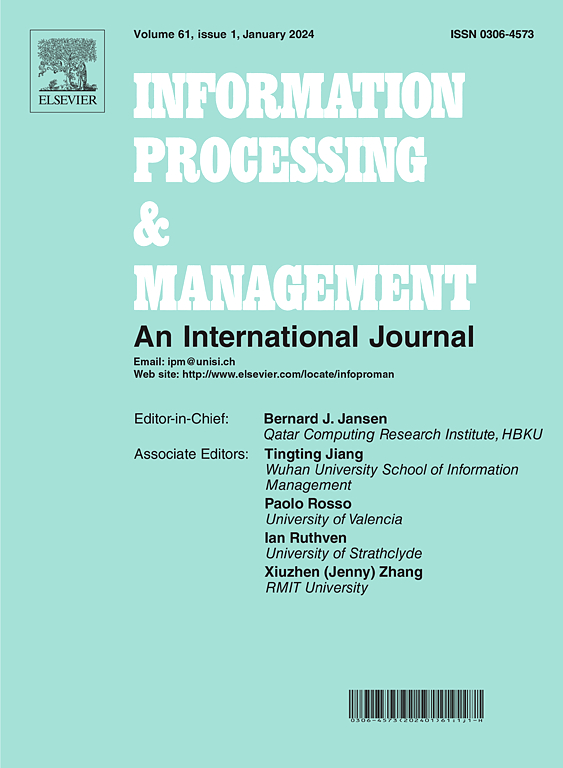IterSum:基于文档拓扑结构的迭代摘要
IF 7.4
1区 管理学
Q1 COMPUTER SCIENCE, INFORMATION SYSTEMS
引用次数: 0
摘要
文档结构在理解和分析文档信息方面起着至关重要的作用。然而,将文档结构特征有效地编码到 Transformer 架构中面临着巨大的挑战。这主要是因为不同类型的文档要求模型采用不同的结构编码策略,从而导致缺乏一个统一的框架来广泛适应不同的文档类型,以充分利用其结构属性。尽管文档类型多种多样,但文档中的句子通过语义关系相互连接,形成了拓扑语义网络。这种拓扑结构对于整合和总结文档中的信息至关重要。在这项工作中,我们介绍了适用于各种类型文本的多功能文本摘要框架 IterSum。在 IterSum 中,我们利用文档的拓扑结构将文本划分为多个区块,首先为初始区块生成摘要,然后将当前摘要与下一个区块的内容相结合,生成后续摘要,并以这种迭代方式继续下去,直到生成最终摘要。我们在九种不同类型的公共数据集上验证了我们的模型,包括新闻、知识库、法律文件和指南。我们进行了定量和定性分析,实验结果表明,我们的模型在以 ROUGE 分数衡量的所有九个数据集上都达到了最先进的性能。我们还探索了低资源摘要,发现即使在多个数据集中只有 10 或 100 个样本,也能获得一流的结果。最后,我们进行了人工评估,进一步验证了我们模型的优越性。本文章由计算机程序翻译,如有差异,请以英文原文为准。
IterSum: Iterative summarization based on document topological structure
Document structure plays a crucial role in understanding and analyzing document information. However, effectively encoding document structural features into the Transformer architecture faces significant challenges. This is primarily because different types of documents require the model to adopt varying structural encoding strategies, leading to a lack of a unified framework that can broadly adapt to different document types to leverage their structural properties. Despite the diversity of document types, sentences within a document are interconnected through semantic relationships, forming a topological semantic network. This topological structure is essential for integrating and summarizing information within the document. In this work, we introduce IterSum, a versatile text summarization framework applicable to various types of text. In IterSum, we utilize the document’s topological structure to divide the text into multiple blocks, first generating a summary for the initial block, then combining the current summary with the content of the next block to produce the subsequent summary, and continuing in this iterative manner until the final summary is generated. We validated our model on nine different types of public datasets, including news, knowledge bases, legal documents, and guidelines. Both quantitative and qualitative analyses were conducted, and the experimental results show that our model achieves state-of-the-art performance on all nine datasets measured by ROUGE scores. We also explored low-resource summarization, finding that even with only 10 or 100 samples in multiple datasets, top-notch results were obtained. Finally, we conducted human evaluations to further validate the superiority of our model.
求助全文
通过发布文献求助,成功后即可免费获取论文全文。
去求助
来源期刊

Information Processing & Management
工程技术-计算机:信息系统
CiteScore
17.00
自引率
11.60%
发文量
276
审稿时长
39 days
期刊介绍:
Information Processing and Management is dedicated to publishing cutting-edge original research at the convergence of computing and information science. Our scope encompasses theory, methods, and applications across various domains, including advertising, business, health, information science, information technology marketing, and social computing.
We aim to cater to the interests of both primary researchers and practitioners by offering an effective platform for the timely dissemination of advanced and topical issues in this interdisciplinary field. The journal places particular emphasis on original research articles, research survey articles, research method articles, and articles addressing critical applications of research. Join us in advancing knowledge and innovation at the intersection of computing and information science.
 求助内容:
求助内容: 应助结果提醒方式:
应助结果提醒方式:


